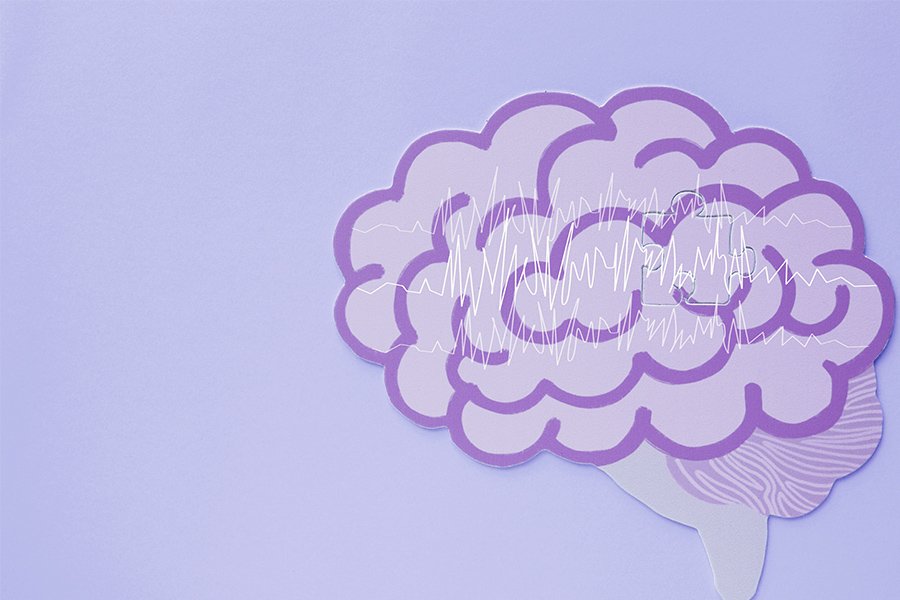
Light Therapy to Help Treat Alzheimer's Disease
Alzheimer's disease is a neurological disorder that drastically impairs memory and cognition and can lead to an early death2. Alzheimer's affects over 5 million Americans, a number expected to grow to about 14 million by 20501.
There are no known cures for Alzheimer's 2. Recently, scientists have found evidence that photobiomodulation can be a way for Light Therapy to help treat Alzheimer's disease5.
Alzheimer's Disease
Alzheimer's disease kills brain cells called neurons that normally communicate with each other to give us the ability to think, remember, and learn2. In early stages, those with Alzheimer's disease suffer from forgetfulness and memory loss2. In later stages, they may lose the ability to carry a conversation, respond to events happening around them, and suffer from dementia, a general term referring to extreme loss of memory and ability to think2. Alzheimer's disease can lead to health complications like blood clots in the brain, loss of ability to breath or swallow, and an increased likelihood to experience accidents like falling, all of which can lead to an early death2.
The two most common signs of Alzheimer's in the brain are plaques and tangles2.

Plaques form out of a protein called beta-amyloid, which normally helps grow and repair neurons2. These plaques form from the unhealthy accumulation of beta-amyloid in the space between cells, blocking their communications and interfering with how cells make and use energy2.
Tau proteins help healthy cells to hold their shape2. Alzheimer's is associated with the tangling of these proteins, which can lead to brain cells dying2.
Both plaques and tangles spread throughout the brain as Alzheimer's progresses, killing cells in different areas of the brain2. When cells are afflicted by plaques and tangles, inflammation and oxidative stress increase, worsening the symptoms of Alzheimer's6.
Currently, there are no known cures for Alzheimer's2. However, researchers are looking towards new treatments using Light Therapy that aim to reduce plaques, tangles, and inflammation5.
Evidence: Using Light to Help Treat Alzheimer's Disease
Researchers have found that photobiomodulation through Light Therapy or other methods can help restore healthy brain function and provide relief for those with Alzheimer's5. A combination of animal studies and trials with humans show promising results for the future of Light Therapy to help treat Alzheimer's disease5.
Researchers found that exposing mice with Alzheimer's-like symptoms to pulsing sound and flashing light helped increase their cognition and memory at the cellular level4. Human trials are underway, and researchers report no side effects to an hour of light and sound treatment a day to help improve the conditions of those with Alzheimer's4. According to Li-Huei Tsai the lead researcher of the 2019 study7:
"This is the first time we've seen that this noninvasive stimulation can improve cognitive function. It's not a drug or an antibody or anything, it's just light and sound."
As a low-risk and convenient option, this type of therapy could be a much-needed source of relief for those with Alzheimer's once researchers conduct more carefully controlled human studies7.
In 2019, researchers found that Light Therapy can reduce the beta-amyloid plaques that build up in the brains of mice with Alzheimer's-like symptoms9. By reducing plaque buildup with Light Therapy, researchers observed better memory and cognitive ability in mice9. This animal study investigated the cellular effects of Light Therapy in treating Alzheimer's, giving an avenue for researchers to implement it as a treatment for humans.
Some researchers have investigated the use of at-home Light Therapy devices in treating Alzheimer's in small groups of people struggling with the disease3. After 12 weeks, one group of researchers found that Light Therapy helped improve the cognitive performance and blood flow in the brain of the treated individuals over those who received standard in-home care3. Though the study was small, it provided a stepping stone for more research and in the words of lead researcher Linda Chao:
"Because PBM was well tolerated and associated with no adverse side effects, these results support the potential of PBM therapy as a viable home treatment for individuals with dementia."
Another study provided daily at-home Light Therapy and weekly in-clinic Light Therapy for 5 patients suffering from Alzheimer's. The patients reported8 "increased function, better sleep, fewer angry outbursts, less anxiety, and no negative side effects." Again, the study was small, but the strong positive results provide support for researchers who are setting up larger clinical trials8.
Lab studies with animals suggest how Light Therapy can help treat Alzheimer's at the cellular level, while human trials put those results into action as a treatment for the disease5. Evidence continues to build for Light Therapy to help treat Alzheimer's disease without side-effects.
Light Lounge: Light Therapy and Up-to-Date Information
If you are interested in learning more about Light Therapy, feel free to reach out to our team on Facebook or Twitter. Follow our Light Lounge blog for more information about cutting edge research and new applications for Light Therapy.
If you want to try the benefits of Light Therapy, including managing chronic pain, recovering from exercise or injury, or boosting your immune system, book a session here.
CITATIONS:
- Alzheimer's Disease Facts and Figures
- What is Alzheimer’s Disease?
- Effects of Home Photobiomodulation Treatments on Cognitive and Behavioral Function, Cerebral Perfusion, and Resting-State Functional Connectivity in Patients with Dementia: A Pilot Trial
- An Hour of Light and Sound a Day Might Keep Alzheimer’s at Bay
- Photobiomodulation for Alzheimer’s Disease: Has the Light Dawned?
- Role of oxidative stress in Alzheimer's disease (Review)
- Daily Light and Sound Stimulation to Improve Brain Functions in Alzheimer's Disease
- Significant Improvement in Cognition in Mild to Moderately Severe Dementia Cases Treated with Transcranial Plus Intranasal Photobiomodulation: Case Series Report
- Activation of PKA/SIRT1 signaling pathway by photobiomodulation therapy reduces Aβ levels in Alzheimer's disease models